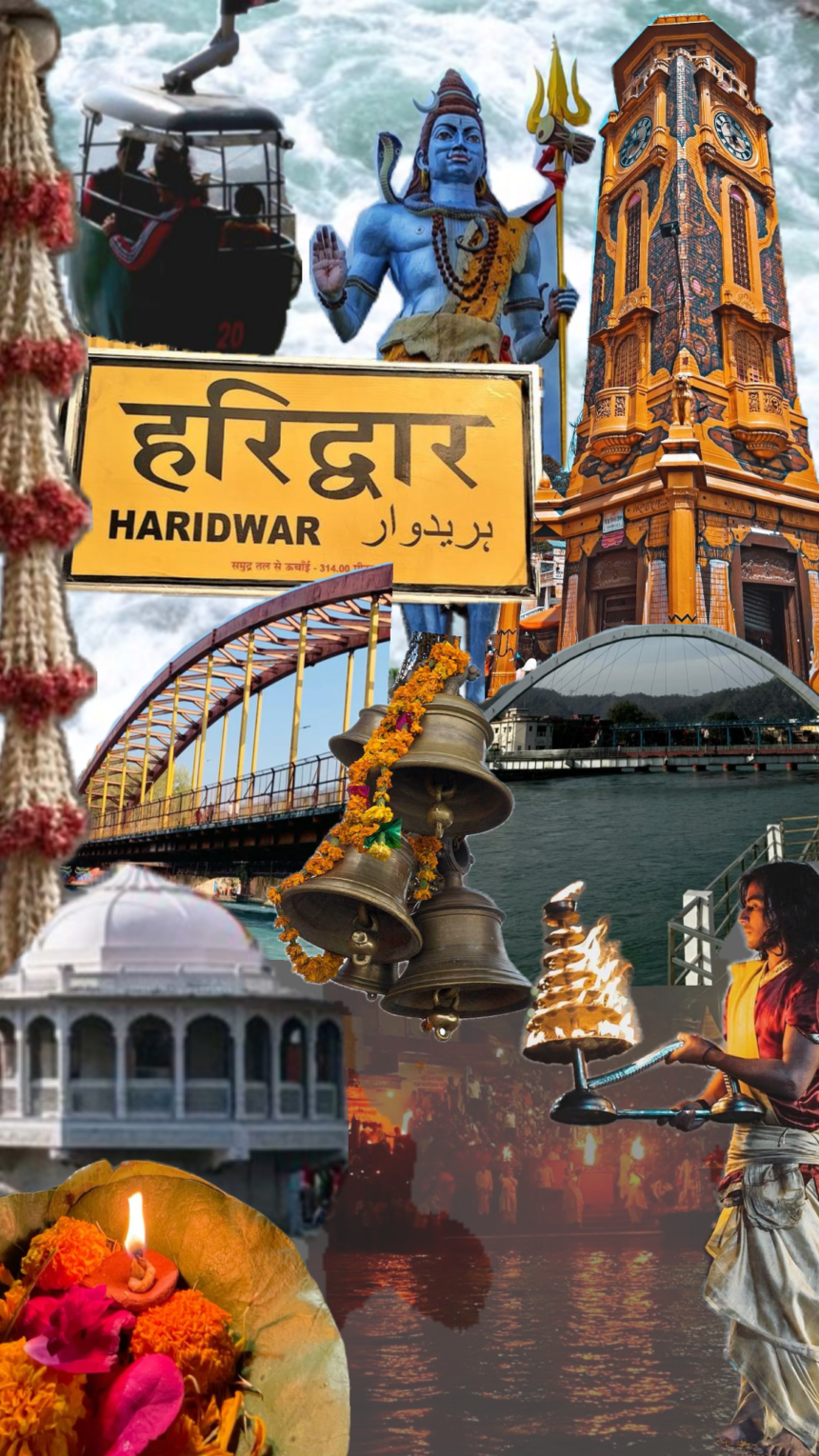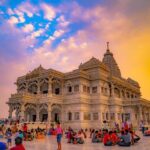Haridwar: A Sacred Journey Through History, Spirituality, and Cultural Significance
Introduction
Located at the foothills of the Himalayas, Haridwar is one of the seven holiest places in India and a central hub of spirituality. This revered city, also known as the “Gateway to God,” is famous for its significance in Hinduism and its association with the River Ganga. For centuries, it has been a destination for pilgrims, devotees, and spiritual seekers from all corners of the world. The city’s rich history, profound spirituality, and vibrant cultural life make it a significant place of pilgrimage and an integral part of Indian heritage.
1. The Historical Roots
It’s history stretches back over 5,000 years, and it has been mentioned in ancient texts like the Mahabharata and the Puranas. The name Haridwar is derived from the Sanskrit words “Hari” (Lord Vishnu) and “Dwar” (gate), which means “The Gateway to God.” It is believed that Lord Vishnu and Lord Shiva visited this sacred place, enhancing its importance as a divine land.
The city has been a significant spiritual and cultural center, attracting both Hindu philosophers and foreign travelers. Haridwar was part of various ancient kingdoms and witnessed the rise of many philosophical schools. Its sacred waters of the Ganges river are said to have the power to cleanse devotees from the cycle of birth and rebirth, granting them moksha (liberation).
2. Spiritual Significance and Religious Observance
Haridwar is primarily known for being one of the holiest places in India, where people come to immerse themselves in the sacred waters of the Ganges River. The Har Ki Pauri ghat in Haridwar is particularly famous for its evening Ganga Aarti, a mesmerizing and powerful ritual that takes place every evening at sunset. Devotees light diyas (oil lamps) and float them on the river while chanting prayers and singing hymns in reverence to the river goddess, Ganga. This spectacle is not only visually captivating but also spiritually uplifting, symbolizing devotion, surrender, and purification.
The city is one of the four places where the Kumbh Mela, a massive religious gathering, takes place every 12 years. During the Kumbh Mela, millions of pilgrims gather to bathe in the holy river, seeking spiritual salvation.
3. Impact on Daily Life
For the residents of Haridwar, spirituality and daily life are intricately woven together. People living here generally adhere to a lifestyle that includes religious rituals, prayers, and community service. The city is known for its simple, yet spiritually-rich way of life, where the teachings of Hinduism, particularly those of karma (action), dharma (righteousness), and bhakti (devotion), form the foundation of everyday existence.
For the pilgrims, Haridwar offers a peaceful and enriching environment. The daily activities in the city revolve around religious practices, such as taking a holy dip in the Ganges, visiting temples, offering prayers, and attending the Ganga Aarti. Visitors often follow a routine of seva (selfless service) by helping in local charities or contributing to the upkeep of sacred places.
4. Temples and Sacred Sites
It boasts several ancient temples, each with its own rich mythological significance. Notable among them are:
- Maya Devi Temple: Dedicated to Maya Devi, the goddess of power, this temple is one of the Shakti Peethas in India and is believed to be where the heart and navel of Goddess Sati fell.
- Chandi Devi Temple: Perched atop a hill, this temple is dedicated to Goddess Chandi. Pilgrims climb the hill to offer prayers and seek blessings.
- Bharat Mata Mandir: A unique temple that honors the motherland, India, showcasing various aspects of the country’s culture and spirituality.
Each temple in Haridwar represents a different aspect of Hindu mythology, with visitors coming to pray for peace, prosperity, and divine grace.
5. Festivals and Cultural Observances
Festivals in Haridwar are celebrated with great fervor, and they are deeply tied to the spiritual beliefs of the people. Some of the most significant festivals include:
- Kumbh Mela: Held every 12 years, the Kumbh Mela is one of the largest religious gatherings in the world. Devotees take a holy dip in the Ganges to cleanse themselves of sins.
- Makar Sankranti: Celebrated with a grand Ganga Aarti and holy dips, Makar Sankranti marks the arrival of the sun into the Capricorn zodiac sign.
- Navratri: A 9-night festival dedicated to Goddess Durga, with fasting, prayers, and aarti performed in temples.
- Diwali: Celebrated with lighting diyas, sweets, and prayers to Lord Rama and Goddess Lakshmi for prosperity and well-being.
During these festivals, the streets of Haridwar come alive with devotional songs, dance performances, and rituals, creating an atmosphere of joy, peace, and collective worship.
6. Influence on Society and Global Importance
The influence of Haridwar extends beyond India’s borders, attracting international tourists and spiritual seekers. Many people from different religious backgrounds visit Haridwar to find spiritual solace, as the city offers an opportunity for deep reflection and connection to the divine.
Haridwar also serves as a global symbol of Hindu culture and spiritual values, promoting a life of simplicity, devotion, and inner peace. Through its temples, ghats, and ashrams, it continues to preserve traditional practices that have shaped the beliefs of millions. Additionally, the Haridwar Yoga Festival and Ayurvedic retreats attract visitors who seek not just spirituality but also holistic well-being.
The city’s religious importance and spiritual richness also contribute to the local economy through tourism, which creates opportunities for artisans, shopkeepers, and local businesses. Haridwar’s religious infrastructure supports education and healthcare systems, furthering the well-being of society.
7. FAQs
- What is the best time to visit?
The best time to visit Haridwar is during the winter season (October to March), as the weather is cool and pleasant. Visiting during the festivals like Kumbh Mela or Makar Sankranti offers a unique spiritual experience. - How can I reach?
Haridwar is well-connected by road, rail, and air. The nearest airport is Jolly Grant Airport in Dehradun, around 35 km from Haridwar. The city is also served by the Haridwar Junction railway station, making it easily accessible from other major cities. - What are the must-visit places?
Apart from Har Ki Pauri and the Chandi Devi Temple, you must visit the Maya Devi Temple, Bharat Mata Mandir, and the Brahmakund for their historical and spiritual significance. - Is a safe place for tourists?
Yes, Haridwar is a safe place for pilgrims and tourists. It is advised to follow the guidelines set by local authorities, especially during festivals when the crowd can be overwhelming.
Conclusion
It is a city where spirituality meets daily life, where ancient rituals, festivals, and divine experiences unfold. Whether you are looking to cleanse your soul in the holy waters of the Ganges, witness the magic of Ganga Aarti, or explore the city’s temples and cultural sites, Haridwar offers a profound and transformative experience. It’s a place that teaches us the true essence of life—devotion, karma, and peace—making it a must-visit destination for anyone seeking a deeper understanding of themselves and the world around them.










